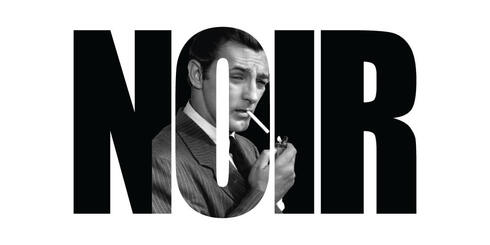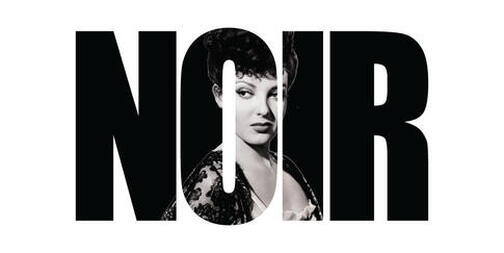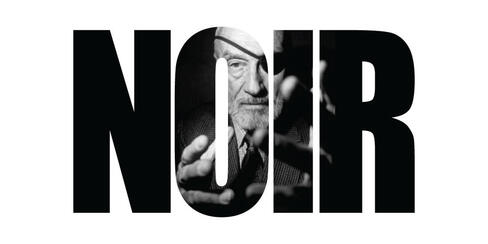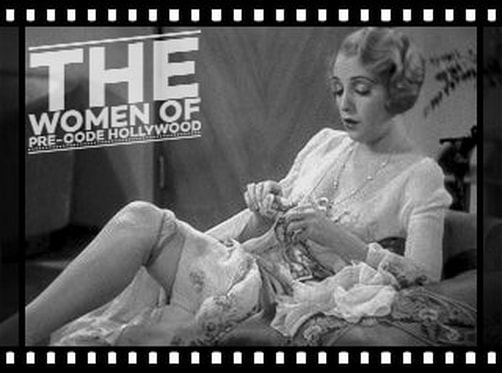AVA GARDNER
AND FILM NOIR
While Ava Gardner is primarily associated with her roles in romantic dramas and other genres, she did make notable contributions to the film noir genre throughout her career. Though she was not typically cast in traditional film noir roles, her performances in certain films showcased her versatility and ability to embody complex characters within the noir framework.
One of Gardner's notable film noir roles was in the 1947 film "The Killers." Although the film is considered more of a crime drama, Gardner's portrayal of Kitty Collins, a femme fatale, demonstrated her ability to embody a seductive and manipulative character. Her performance in this film helped solidify her status as a rising star and showcased her potential in the realm of film noir.
In addition, Gardner's performance in the 1951 film "Pandora and the Flying Dutchman" incorporated noir elements. The film blended romance, mystery, and a touch of the supernatural, creating a unique noir-tinged atmosphere. Gardner played the enigmatic Pandora Reynolds, a character caught in a web of desire and fate.
While Gardner's contributions to the film noir genre may not be as extensive as some other actresses closely associated with the genre, her performances in films like "The Killers" and "Pandora and the Flying Dutchman" demonstrated her ability to bring complexity and allure to noir-influenced characters. Her presence and talent added a distinct flavor to the films in which she appeared, contributing to the broader landscape of film noir.
One of Gardner's notable film noir roles was in the 1947 film "The Killers." Although the film is considered more of a crime drama, Gardner's portrayal of Kitty Collins, a femme fatale, demonstrated her ability to embody a seductive and manipulative character. Her performance in this film helped solidify her status as a rising star and showcased her potential in the realm of film noir.
In addition, Gardner's performance in the 1951 film "Pandora and the Flying Dutchman" incorporated noir elements. The film blended romance, mystery, and a touch of the supernatural, creating a unique noir-tinged atmosphere. Gardner played the enigmatic Pandora Reynolds, a character caught in a web of desire and fate.
While Gardner's contributions to the film noir genre may not be as extensive as some other actresses closely associated with the genre, her performances in films like "The Killers" and "Pandora and the Flying Dutchman" demonstrated her ability to bring complexity and allure to noir-influenced characters. Her presence and talent added a distinct flavor to the films in which she appeared, contributing to the broader landscape of film noir.
AVAILABLE FILMS:
BAREFOOT CONTESSA, THE (1954)
BLONDE FEVER (1944)
BRIBE, THE (1949)
CALLING DR. GILLESPIE (1942)
EAST SIDE, WEST SIDE (1949)
HITLER'S MADMAN (1943)
HUCKSTERS, THE (1947)
JOE SMITH, ALL AMERICAN (1942)
KID GLOVE KILLER (1942)
KILLERS, THE (1946)
MY FORBIDDEN PAST (1951)
ONE TOUCH OF VENUS (1948)
PILOT NO. 5 (1943)
REUNION IN FRANCE (1942)
SHADOW OF THE THIN MAN (1941)
SINGAPORE (1947)
WHISTLE STOP (1946)
BLONDE FEVER (1944)
BRIBE, THE (1949)
CALLING DR. GILLESPIE (1942)
EAST SIDE, WEST SIDE (1949)
HITLER'S MADMAN (1943)
HUCKSTERS, THE (1947)
JOE SMITH, ALL AMERICAN (1942)
KID GLOVE KILLER (1942)
KILLERS, THE (1946)
MY FORBIDDEN PAST (1951)
ONE TOUCH OF VENUS (1948)
PILOT NO. 5 (1943)
REUNION IN FRANCE (1942)
SHADOW OF THE THIN MAN (1941)
SINGAPORE (1947)
WHISTLE STOP (1946)
VIDEO TRIBUTE:
Ava Gardner
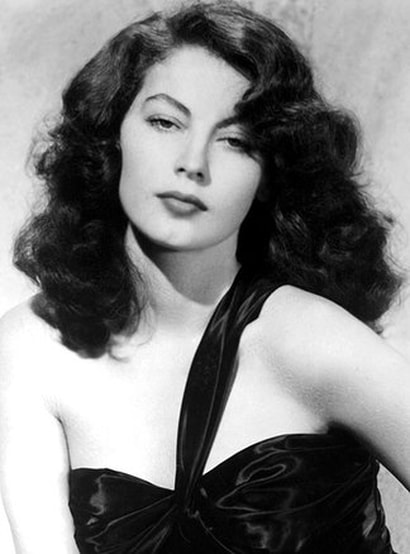
Ava Gardner was an American actress and one of Hollywood's most iconic stars. She was born on December 24, 1922, in Grabtown, North Carolina. Gardner rose to fame during the Golden Age of Hollywood and became known for her beauty, talent, and captivating on-screen presence.
Gardner grew up in a rural farming community and was the youngest of seven children. Her striking looks and charm were noticed by a talent scout from MGM, leading to her signing a contract with the studio in 1941. She initially struggled with acting and was often cast in minor roles. However, her breakthrough came with her performance in the film "The Killers" (1946), where she portrayed the alluring femme fatale Kitty Collins.
Throughout her career, Gardner starred in a wide range of films across different genres. Some of her notable movies include "Show Boat" (1951), "Mogambo" (1953), "The Barefoot Contessa" (1954), and "On the Beach" (1959). She worked with renowned directors such as John Ford, Howard Hawks, and Joseph L. Mankiewicz, and acted alongside notable actors such as Clark Gable, Humphrey Bogart, and Burt Lancaster.
Gardner was known for her beauty, which earned her the title of "The World's Most Beautiful Animal" by the press. However, she was determined to prove herself as more than just a pretty face. She took on challenging roles and showcased her acting skills, earning critical acclaim for her performances. Gardner's on-screen persona exuded a mix of vulnerability, sensuality, and strength, making her a compelling presence in her films.
Off-screen, Gardner led a turbulent personal life. She was married three times, with her most famous marriage being to actor Frank Sinatra from 1951 to 1957. Their relationship attracted significant media attention, and they were considered one of Hollywood's power couples at the time.
Gardner's career spanned several decades, and she continued to act in films throughout the 1960s and 1970s. However, her later years were marred by health issues and personal struggles. Despite this, she remains an enduring symbol of Hollywood glamour and talent.
Ava Gardner passed away on January 25, 1990, in London, England, at the age of 67. Her legacy as an iconic actress endures, and she is remembered as one of the most enchanting and alluring stars in the history of American cinema.
Gardner grew up in a rural farming community and was the youngest of seven children. Her striking looks and charm were noticed by a talent scout from MGM, leading to her signing a contract with the studio in 1941. She initially struggled with acting and was often cast in minor roles. However, her breakthrough came with her performance in the film "The Killers" (1946), where she portrayed the alluring femme fatale Kitty Collins.
Throughout her career, Gardner starred in a wide range of films across different genres. Some of her notable movies include "Show Boat" (1951), "Mogambo" (1953), "The Barefoot Contessa" (1954), and "On the Beach" (1959). She worked with renowned directors such as John Ford, Howard Hawks, and Joseph L. Mankiewicz, and acted alongside notable actors such as Clark Gable, Humphrey Bogart, and Burt Lancaster.
Gardner was known for her beauty, which earned her the title of "The World's Most Beautiful Animal" by the press. However, she was determined to prove herself as more than just a pretty face. She took on challenging roles and showcased her acting skills, earning critical acclaim for her performances. Gardner's on-screen persona exuded a mix of vulnerability, sensuality, and strength, making her a compelling presence in her films.
Off-screen, Gardner led a turbulent personal life. She was married three times, with her most famous marriage being to actor Frank Sinatra from 1951 to 1957. Their relationship attracted significant media attention, and they were considered one of Hollywood's power couples at the time.
Gardner's career spanned several decades, and she continued to act in films throughout the 1960s and 1970s. However, her later years were marred by health issues and personal struggles. Despite this, she remains an enduring symbol of Hollywood glamour and talent.
Ava Gardner passed away on January 25, 1990, in London, England, at the age of 67. Her legacy as an iconic actress endures, and she is remembered as one of the most enchanting and alluring stars in the history of American cinema.
quotes:
"I haven't taken an overdose of sleeping pills and called my agent. I haven't been in jail, and I don't go running to the psychiatrist every two minutes. That's something of an accomplishment these days."
"Maybe I just didn't have the temperament for stardom. I'll never forget seeing Bette Davis at the Hilton in Madrid. I went up to her and said, "Miss Davis, I'm Ava Gardner and I'm a great fan of yours." And do you know, she behaved exactly as I wanted her to behave. "Of course you are, my dear," she said. "Of course you are." And she swept on. Now that's a star."
"[on Robert Taylor] I knew him as a warm, generous, intelligent human being. Our love affair lasted three, maybe four months. A magical little interlude. I've never forgotten those few hidden months. I think Bob, despite all his efforts, couldn't break the mold of the beautiful lover. The film world remembers him that way, and I have to say that I do, too."
- Ava Gardner
trivia:
In 1995 she was chosen by Empire magazine as one of the 100 Sexiest Stars in film history (#68) | Her singing voice in Show Boat (1951) was dubbed by Annette Warren, although her voice is left in on the soundtrack album.
Her early education was sketchy; by 1945 she had read two books, the Bible and "Gone with the Wind." In later life she more than made up for this lack by continual self-education. | She sang in her own voice for The Killers (1946) but in all MGM films her singing voice was dubbed (much to her disgust).
She spent her final years as a recluse in her London apartment--her only companions were her longtime housekeeper Carmen Vargas and her beloved Welsh Corgi, Morgan. Two strokes in 1986 left her partially paralyzed and bedridden. Although she could easily afford her medical expenses, Frank Sinatra wanted to pay for her to visit a specialist in the US, and she allowed him to make the arrangements for a medically-staffed private plane. Her last words (to her housekeeper Carmen) were, "I'm so tired", before she died of pneumonia at age 67. Vargas took her body home to her native North Carolina for private burial. None of her ex-husbands attended.
A statue of her from The Barefoot Contessa (1954) was given to Frank Sinatra as a gift. He kept it in his backyard garden well after their divorce. When he married Barbara Marx, she forced him to get rid of it.
During the first two years of her marriage to Frank Sinatra, he was at the lowest point of his career. She often had to loan him money so he could buy presents for his children. He went broke in 1951, and she had to pay for plane tickets for him so that he could go with her to Africa, where she was shooting Mogambo (1953). This all changed after he won the Best Supporting Actor Oscar for his performance in From Here to Eternity (1953).
Frank Sinatra bought her a puppy for her birthday during their courtship, a Corgi she named Rags. For the rest of her life she always had a Corgi with her. After Rags died, she had Cara and then Morgan.
In Charlton Heston's autobiography "In the Arena" he revealed that she behaved badly during the troubled shoot of 55 Days at Peking (1963). For example, she stopped the filming when a Chinese extra took her picture without permission. Heston also stated that her character was killed off to keep the producers and director from having to deal with her anymore.
She sought the role of Mrs. Robinson in The Graduate (1967), and reportedly called Mike Nichols saying, "I want to see you! I want to talk about this 'Graduate' thing!" Nichols did not seriously consider her for the role, but did end up visiting her hotel. He later recounted that "she sat at a little French desk with a telephone, she went through every movie star cliché. She said, 'All right, let's talk about your movie. First of all, I strip for nobody'".
Yvonne De Carlo once said of her, "She's one of the few women in Hollywood that I like".
Her early education was sketchy; by 1945 she had read two books, the Bible and "Gone with the Wind." In later life she more than made up for this lack by continual self-education. | She sang in her own voice for The Killers (1946) but in all MGM films her singing voice was dubbed (much to her disgust).
She spent her final years as a recluse in her London apartment--her only companions were her longtime housekeeper Carmen Vargas and her beloved Welsh Corgi, Morgan. Two strokes in 1986 left her partially paralyzed and bedridden. Although she could easily afford her medical expenses, Frank Sinatra wanted to pay for her to visit a specialist in the US, and she allowed him to make the arrangements for a medically-staffed private plane. Her last words (to her housekeeper Carmen) were, "I'm so tired", before she died of pneumonia at age 67. Vargas took her body home to her native North Carolina for private burial. None of her ex-husbands attended.
A statue of her from The Barefoot Contessa (1954) was given to Frank Sinatra as a gift. He kept it in his backyard garden well after their divorce. When he married Barbara Marx, she forced him to get rid of it.
During the first two years of her marriage to Frank Sinatra, he was at the lowest point of his career. She often had to loan him money so he could buy presents for his children. He went broke in 1951, and she had to pay for plane tickets for him so that he could go with her to Africa, where she was shooting Mogambo (1953). This all changed after he won the Best Supporting Actor Oscar for his performance in From Here to Eternity (1953).
Frank Sinatra bought her a puppy for her birthday during their courtship, a Corgi she named Rags. For the rest of her life she always had a Corgi with her. After Rags died, she had Cara and then Morgan.
In Charlton Heston's autobiography "In the Arena" he revealed that she behaved badly during the troubled shoot of 55 Days at Peking (1963). For example, she stopped the filming when a Chinese extra took her picture without permission. Heston also stated that her character was killed off to keep the producers and director from having to deal with her anymore.
She sought the role of Mrs. Robinson in The Graduate (1967), and reportedly called Mike Nichols saying, "I want to see you! I want to talk about this 'Graduate' thing!" Nichols did not seriously consider her for the role, but did end up visiting her hotel. He later recounted that "she sat at a little French desk with a telephone, she went through every movie star cliché. She said, 'All right, let's talk about your movie. First of all, I strip for nobody'".
Yvonne De Carlo once said of her, "She's one of the few women in Hollywood that I like".

